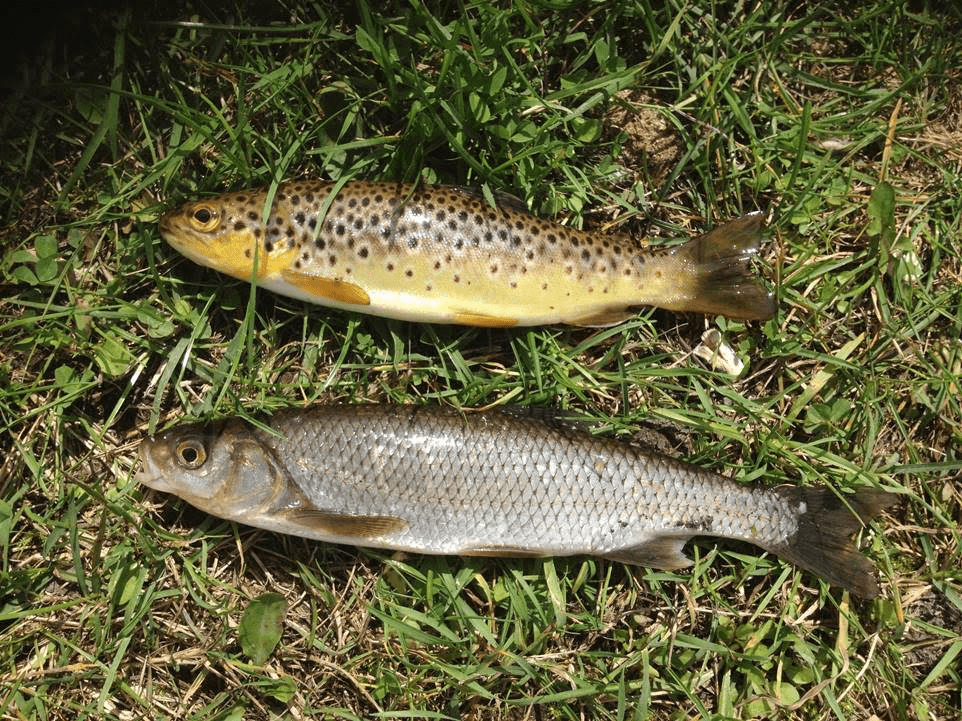Paula Tierney Awarded Inaugural Irish Society for Parasitology William C. Campbell Award
Paula Tierney, a final year PhD student at Trinity College Dublin, Ireland was recently awarded the 2020 Irish Society for Parasitology Prof. William C. Campbell Postgraduate Award, sponsored by Cambridge University Press, for her research entitled ‘Release from parasites: invasive dace in Ireland are less parasitized than native brown trout and dace in its native European range’.
Paula had the privilege of meeting Prof. Campbell—Irish parasitologist and Nobel Laureate—at the beginning of her PhD in 2016, at a celebration of his recent Nobel Prize for his part in the development of the anti-helminthic drugs, ivermectins. To receive an award in honour of one of her scientific and parasitological heroes, four years later, is a great honour that has wonderfully capped off her years as a PhD Candidate.

Paula’s award-winning research is described below.
The Irish Society for Parasitology was founded in 1993 with the aims of advancing the study of parasitology, facilitating communication with those interested in parasitology, promoting the dissemination of information and development of resources for teaching and research in parasitology. The ISP can be reached via Twitter at @ISParasitology, e-mail at irishsoc.parasitology@gmail.com or via Facebook.
Escape from parasites: invasive populations of invasive fish are less parasitized than native populations
Parasites are small and often-overlooked organisms but they play important roles in a range of ecological interactions and processes, including in those involving invasive species. Invasive species are one of the leading threats to biodiversity worldwide and the parasites they bring with them or acquire from local communities have the capacity to mediate the impacts of invasive species on native ecosystems. The enemy release hypothesis (ERH) says that invasive species escape natural enemies like predators, competitors and parasites during invasion, giving them an advantage over native species. This means that a) invasive species should have fewer parasites in areas where they are invasive than in areas where they are native and b) invasive species should have fewer parasites than similar native species occurring in the same areas.
I and my colleagues tested these hypotheses in an invasive freshwater fish in Ireland, dace (Leuciscus leuciscus), using a literature search of the helminth parasite species of dace across its native range in Great Britain, the Nordics and continental Europe, and a helminth community survey of invasive dace and native brown trout (Salmo trutta) at the core and front of dace’s invasive range in Ireland.
We found that invasive dace in Ireland had much fewer helminth parasites than dace in its native range—3 species and 2 other unidentified taxa in Ireland compared to 24 species in Britain and 84 in continental Europe (Fig 1a). In Ireland, invasive dace were infected with fewer helminths than co-occurring brown trout—dace had four helminth taxa at the core of their range and one at the invasion front while sympatric trout had 10 and 8, respectively (Fig 1b). Dace also had fewer helminth species per fish and 82% of dace were uninfected versus only 11% of brown trout. Interestingly, while dace lost parasites during invasion, they gained very few parasite species, even at the invasion core where they have been present for over 120 years. This may be because Ireland has no native fish in the same family as dace and, thus, very few native parasites adapted to infect dace.

Our results show that invasive populations are less parasitized than native populations and that more recently established populations have fewer parasites. We also demonstrate that, in some areas, invasive species may continue to escape parasites even long after their initial invasion—a potentially important consideration when assessing the long-term impact of invasive species.

The first part of this research, the paper “Evidence for enemy release in invasive common dace Leuciscus leuciscus in Ireland: a helminth community survey and systematic review“, authored by Paula A. Tierney, Joe M. Caffrey, Sharon M. Matthews, Emy Costantini and Celia V. Holland, is published in the Journal of Helminthology and available free for a month.





